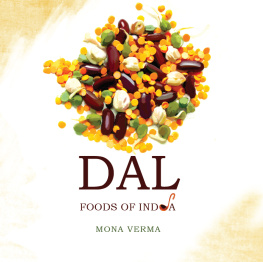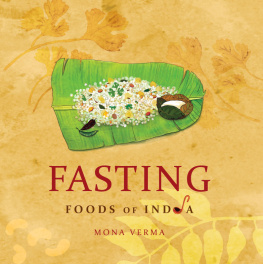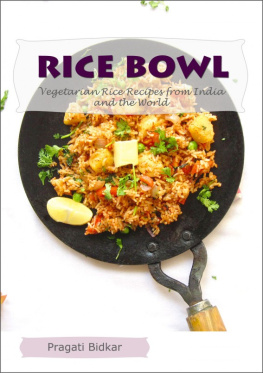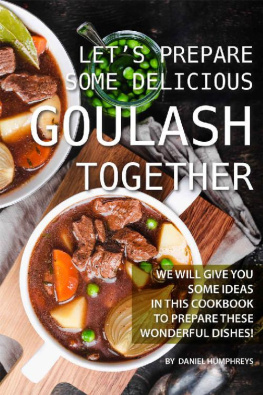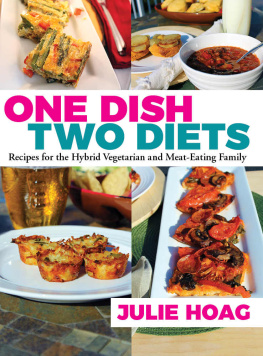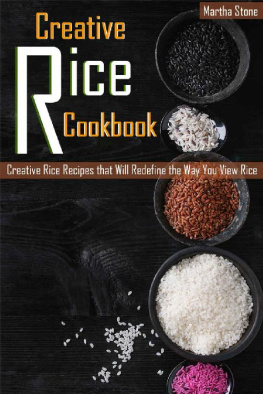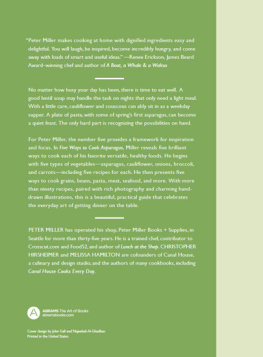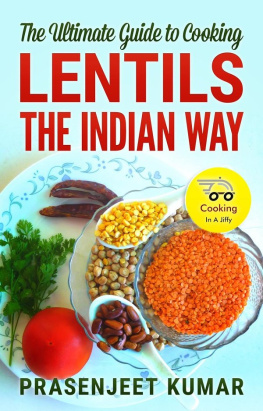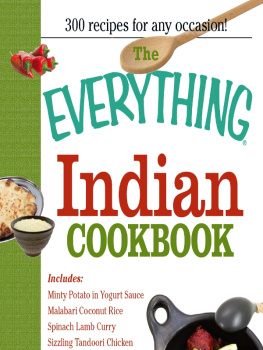ISBN 978-93-81576-14-4
Mona Verma, 2014
Cover, Illustrations & Artworks Suhita Mitra
Printing Repro India Pvt Ltd
Published in India, 2014
BODY & SOUL BOOKS
An imprint of
LEADSTART PUBLISHING PVT LTD
Trade Centre, Level 1, Bandra Kurla Complex, Bandra (E), Mumbai 400 051, INDIA
T + 91 22 40700804 F +91 22 40700800 E info@leadstartcorp.com W www.leadstartcorp.com
US Office Axis Corp, 7845 E Oakbrook Circle, Madison, WI 53717, USA
All rights reserved worldwide
No part of this publication may be reproduced, stored in or introduced into a retrieval system, or transmitted, in any form, or by any means (electronic, mechanical, photocopying, recording or otherwise), without the prior permission of the Publisher. Any person who commits an unauthorized act in relation to this publication can be liable to criminal prosecution and civil claims for damages.
To my late Chachaji, Prem & Chachiji, Durupadi ~
who brought me up as their daughter
during my adolescent years
A BOUT THE A UTHOR
Mona Verma ( nee Pahlajani) was born in 1940, in Sukker, Pakistan, before the fateful events of Partition. Following an Intermediate in Arts from Bhopal University, her interest in cookery took wing after marriage. She learnt the art of cookery by attending classes and experimenting on her own with ingredients and flavours. In 1968, she started her own cookery classes in Calcutta, which became extremely popular, and she was soon appointed cookery teacher for graduate students at St. Lorettos Convent. In 1971, she moved to Mumbai and so did her cookery classes. The fact that, at one time, 13 of her students were running their own cookery classes is a tribute to her skill both as a cook as well as a teacher. For many years she also conducted Finishing Courses for final year students at Vivekanand Education Trusts High School & College. Mona has varied social interests. She has been actively involved with the Lions Movement; served on the board of Seva Samiti , a charitable trust working for needy women; and is an active member of the National Council of Women in India (Nagpur Chapter). She is also a poet and student of Indian classical music. Writing is one of her many passions and her articles have appeared in many newspapers and magazines. She continues to write a Sunday cookery column for The Hitavada . Her book, Fasting Foods Of Indi a has been published by Leadstart Publishing as part of the Foods Of India series. Mona lives in Nagpur with her husband Asoka, a Management Consultant. Mona can be reached at: monaverma@sancharnet.in
A BOUT THE I LLUSTRATOR
Suhita Mitra was born in Kohima, Nagaland a region of untouched, natural beauty. Wherever the eye travelled, there were hills, trees, flowers and wildlife. Television was still unknown and all that young children had to amuse them was the enchantment offered by the gardens, the playing fields and books lots of story books. Such an environment was a natural nursery for the imagination. Suhita joined the National Institute Of Design, Ahmedabad, where the untrammeled imagination fostered by her childhood environment suddenly found meaningful channels through art appreciation, photography, freehand drawing, animation and typography. With her love of
nature, she feels inspired to give back through her work as an illustrator and designer. Suhita can be reached at: suhita.mitra@gmail.com
C ONTENTS
Basics & Masalas
Curry Powders
Chutneys
I NTRODUCTION
Welcome to the exotic world of dal s. This book presents an imaginative and creative range of recipes to tempt even the most reluctant partaker. Dal is a nutrient-rich and essential part of Indian meals. It is served thrice in a thali dal with rice, dal with roti and dal with vegetables. In Indian cuisine, dal and rice form staple fare and everyone has their own favourite variations.
The art of Indian cooking lies in the careful blending of different spices to yield subtle variations in flavours. The classic tastes of Indian food are characterised by shata rasas (7 flavours) sweet, salty, sour, hot, pungent, bitter and astringent. Indian dal preparations are replete with them all. One of the most important characteristics of dal s is their ability to blend with any spices, herbs and even non-vegetarian ingredients. They are universally inclusive. Whether one is a good cook or not really depends on ones delicate touch with spices. It is also why Indian mothers begin teaching their children to cook, with dal s, as most spices and ingredients can be mixed into dal s. Thus novices become well versed with different ingredients and spices and cultivate a sense of smell and colour. This book will be of great help to both teachers and learners.
This collection is a celebration of the best of the numerous varieties of dal dishes. It is my desire to introduce to you the amazing nature of dal s which can be mixed and matched with any spice or herb and a pinch of imagination, basic knowledge and taste. Dal delicacies have always been the in thing in every generation so I have attempted to present age-old dal preparations in new, different and unique ways. The recipes are not the usual restaurant fare. While some may be exotic, they are also easy to make, inexpensive, and a gourmets delight.
Desi ghee /fats have been used to make food rich but the amazing thing about this cuisine is that cooking is only complete when the food oozes out the fat. This can then be drained and reused as it now has the added value of all the spices and flavours. The cuisine presented is a little spicy yet not excessively hot. Health considerations have also been given due importance in writing this book. Every recipe is tried and tested until perfect. Accuracy in measurements is another thing you can count on.
Rich dal s are usually made during holidays and festive occasions which makes their appearance at the table more rare. I have provided a range of dal s for different occasions as well as for day-to-day cooking. The soups and salads are most uncommon. It a common practice in south India to offer Sundal packets with betel nuts and kum-kum to guests during Dassera or Navaratri, as divine food of the gods. The tangy and spicy chaat s and bhel s are of course, mouthwatering delicacies. The snacks and sandwiches are presented as all-time favourites for morning or late afternoon food. The hot vada s, with any local drink, on cold evenings or rainy days, is something to enjoy and relish while sitting in an arm-chair near a window. Every region has its own popular snacks and I have collected and included many of these.

